The Amanita muscaria (Fly Agaric) is a globally recognized mushroom with a rich cultural history, used for centuries in spiritual practices. Its active compound, psilocybin, is being explored for therapeutic mental health applications. While scientific research shows promise, caution is advised due to unknown long-term effects. Understanding Amanita Muscaria's science and risks is crucial for personal safety and advancing knowledge. This mushroom's cultural significance sparks interest in psychedelic substances' ancient role but requires expert guidance due to potential toxicity; misuse can lead to severe reactions. The legal status of mind-altering substances like psilocybin varies globally, emphasizing the need for education, informed consent, and supervised environments for safe and therapeutic experiences.
In this comprehensive exploration, we delve into the mind-altering effects of Amanita muscaria, commonly known as the Fly Agaric. This ancient fungus has captivated cultures throughout history with its vibrant colors and mysterious properties. Beyond folklore, understanding its chemical composition offers insights into its potential therapeutic applications. We explore its edible aspects, debunk myths, and analyze risks, legal implications, and responsible use. Unraveling the complexities of Amanita muscaria provides a nuanced perspective on this fascinating natural compound.
Understanding Mind-Altering Substances: A Brief Overview
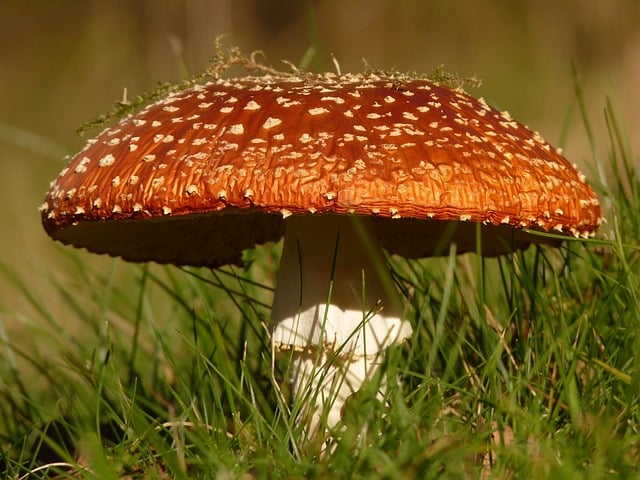
Mind-altering substances have been part of human culture for centuries, often used in spiritual and ritual contexts to induce altered states of consciousness. These substances can range from natural plants and mushrooms to synthetic chemicals, each with unique effects on the mind. One well-known example is the Amanita muscaria, commonly known as the Fly Agaric or Magic Mushroom. This edible fungus contains psilocybin, a compound that has been studied for its potential therapeutic benefits in treating conditions like depression and anxiety.
The study of these substances has evolved significantly, with researchers exploring their effects on brain chemistry and consciousness. While some mind-altering compounds have shown promise in clinical trials, it’s crucial to approach them with caution due to potential risks and unknown long-term effects. Understanding the science behind these substances is essential for both scientific exploration and personal safety.
The Role of Amanita Muscaria in Cultural and Historical Contexts
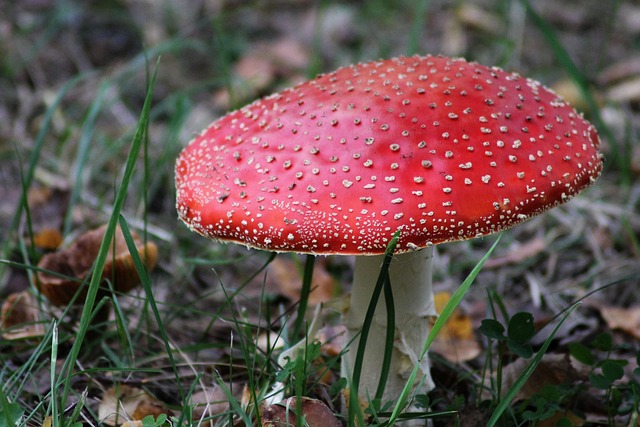
The Amanita muscaria, commonly known as Fly Agaric, is a fungus with a rich history and cultural significance. In various indigenous cultures worldwide, this mushroom has held both mystical and medicinal properties for centuries. Its striking appearance, characterized by bright red caps and white spots, has made it a symbol of magic and the supernatural. Historically, Amanita muscaria has been used in ritual ceremonies, where its mind-altering effects were believed to facilitate spiritual connections and visions.
In terms of edibility, Fly Agaric is known for its unique properties but should be handled with caution. While some indigenous groups incorporate it into their culinary traditions, the majority of modern mycologists advise against consuming it due to potential toxicity. The mushroom contains compounds that can induce altered states of consciousness, and in some cases, misuse has led to adverse health effects. Its cultural significance, however, continues to fascinate scholars and enthusiasts alike, offering a glimpse into humanity’s ancient relationship with psychedelic substances.
What is Amanita Muscaria Edible? Unraveling the Myths
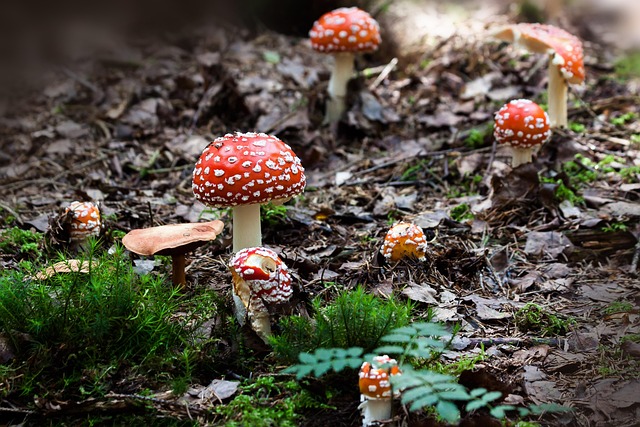
The Amanita Muscaria, commonly known as the Fly Agaric or Magic Mushroom, has long been a subject of fascination and myth in various cultures worldwide. One prevalent question that arises is, “Is Amanita Muscaria edible?” While its distinctive red cap and white spots have sparked curiosity, it’s essential to unravel these myths with caution.
Contrary to popular belief, not all parts of the Amanita Muscaria are edible. The mushroom itself contains powerful psychotropic compounds, primarily psilocybin and psilocin, which can alter one’s perception and consciousness. Ingesting this mushroom can lead to intense psychological effects, often referred to as a “mushroom experience.” However, consuming specific parts, like the stem or raw caps, can be extremely dangerous due to the presence of amatoxin, a potent hepatotoxin. This toxic compound can cause severe liver damage and even lead to death if not prepared properly according to traditional methods or under expert supervision.
Potential Benefits and Therapeutic Applications

The mind-altering effects of certain substances have long been a subject of fascination and controversy, with many plants and fungi holding both cultural significance and therapeutic potential. One such example is Amanita muscaria, commonly known as Fly Agaric or Magic Mushroom. Despite its psychedelic properties, this edible mushroom has been used in traditional medicine for centuries. Research suggests that it contains powerful compounds that can enhance cognitive functions, stimulate creativity, and induce profound spiritual experiences.
The therapeutic applications of Amanita muscaria extend beyond its psychoactive effects. Studies indicate that its active ingredients may have anti-inflammatory properties and could potentially aid in the treatment of anxiety disorders, depression, and PTSD. Controlled studies and microdosing regimens are being explored to harness these benefits without the intense psychedelic experiences, offering a promising avenue for alternative mental health treatments.
Risks and Side Effects: Navigating the Dangers
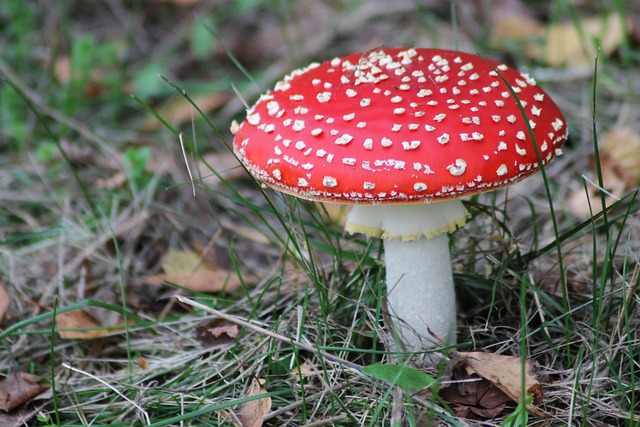
The mind-altering effects sought after by some can be achieved through various substances, but it’s crucial to understand the risks involved. One such substance is Amanita Muscaria, commonly known as Fly Agaric or Magic Mushroom, which has gained attention for its potential psychedelic properties. While some claim it offers therapeutic benefits and enhanced creativity, the reality is far from harmless. Consuming this mushroom can lead to intense hallucinations, anxiety, paranoia, and even severe adverse reactions in individuals with pre-existing mental health conditions.
Navigating these dangers requires a deep understanding of the substance’s effects and personal responsibility. The variability in dosage and individual tolerance means there’s no safe threshold for experimentation. Moreover, the long-term psychological impacts are still largely unknown, making it essential to approach such substances with extreme caution. In terms of edible options, identifying suitable species like Amanita Muscaria requires expert knowledge to avoid fatal mistakes, as many look-alike mushrooms contain toxic compounds.
Legal Implications and Responsible Use
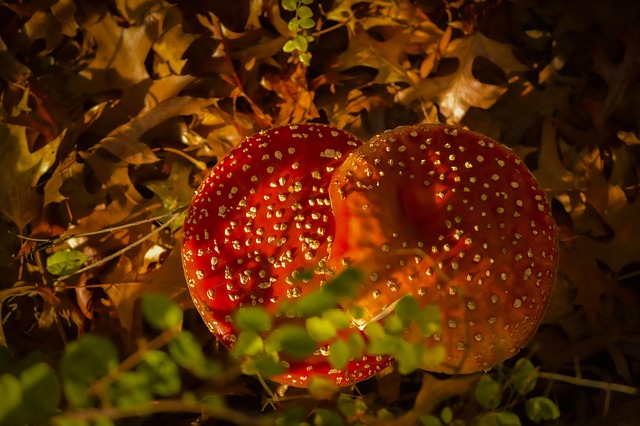
The legal implications surrounding mind-altering substances, particularly psilocybin found in mushrooms like Amanita muscaria (edible), vary significantly worldwide. In some countries, it is classified as a Schedule I drug, indicating no accepted medical use and high potential for abuse. Conversely, nations like the Netherlands and Portugal have decriminalized possession and use, acknowledging their therapeutic potential. This discrepancy highlights the ongoing debate about regulation.
Responsible use emphasizes informed consent, set and setting, and supervised environments. It’s crucial to understand the effects, anticipate potential outcomes, and ensure a safe space. For instance, psilocybin has shown promise in clinical settings for treating depression and anxiety, but it’s not without risks. Misuse or unsupervised consumption can lead to unpleasant experiences known as bad trips, emphasizing the need for education and guidance in legal and regulated contexts.
